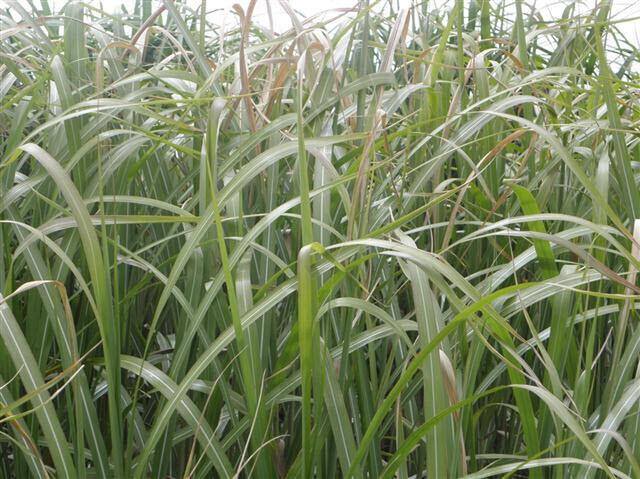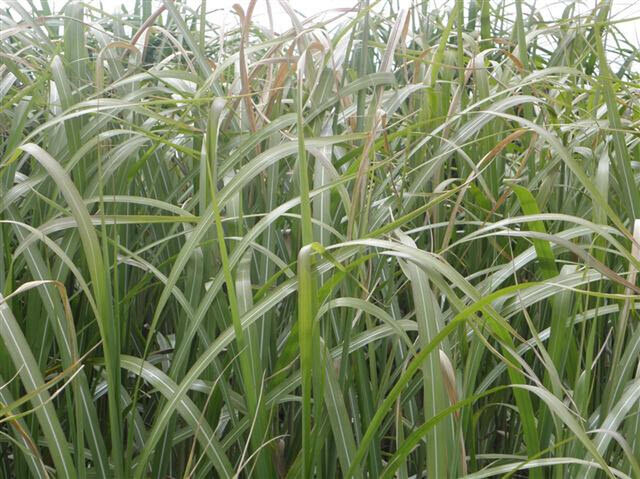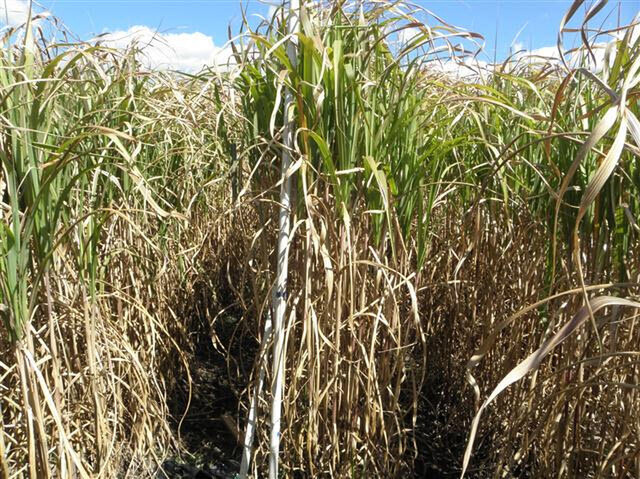The past month has finally seen the end of the drought and although it has been very hard on many people in the rural sector, it has given us some very useful information on how Miscanthus handles drought.
We were lucky enough in Hawkes Bay to have Miscanthus growing on two sites – one with a naturally high water table, and the other with a very well-drained soil. On this second site, part of the crop received accidental irrigation that was being delivered to the paddock next door. As a result we got a good picture of what happens to irrigated and non-irrigated crops on these soils.
As you would expect, although the Miscanthus is deep-rooted, if there is no rain, eventually the dryness gets down as far as the Miscanthus roots extend. The result is an interesting contrast between plants that by March were brown and in the order of 1.5 m tall – the area with no irrigation – and plants that by the end of March were still green and approximately 2.5 m tall – the area that had received some accidental irrigation. The contrast between these plants and those on the high water table site was also dramatic. Where the water table was high and the plants did not suffer from water shortage at all, they were still green and over 3.5 m tall by the end of the growing season.
In the Waikato, one site covered a range of examples which included very damp land at one extreme; well-drained but deep soils at the other extreme; and in between, areas where the plants were stressed from relatively early on.
We have data on nutrient levels for these sites, but only indicative data on production. However the indications are that where establishment and particularly initial weed control was effective, the plants performed extremely well until around the end of January when they began to show drought effects as shown in the photograph below.
The first sign was some browning of the tips of the uppermost leaves, matched at the same time by some shedding of lower leaves near the ground. But even by the end of March, the plants on much of this site were still showing a large amount of green leaf area, which augurs well for the potential use of Miscanthus as a backup fodder crop in case of drought.
The picture below shows plants on this site near Tokoroa on 21 March 2013.
These plants, at the end of only their second growing season, were a little over 2 m tall at the time the photograph was taken and it is easy to see the dried leaves near the base of the plant that had begun to be actively shed.
As soon as we have all of the data analysed regarding the value of Miscanthus for stock feed, we will be publishing this on our website so that farmers can get a good idea of how useful this plant would be as a backup crop for use in summer if drought should strike again. Then if drought did not eventuate, they would have a crop that instead be harvested in winter for use as calf bedding, or for use in stock barns or on feed pads.
April has also seen Miscanthus New Zealand giving presentations at both the Residues to Revenues conferences in Auckland and in Melbourne, which included some mention of Miscanthus, and just last week at the Tree Crops Association conference in Hamilton. All those presentations were very well received and have generated useful interest.
In next month’s chat I will be talking about a major opportunity in Northland which will require significant areas of Miscanthus to be established with a guaranteed market and a long-term supply contract available for growers.




